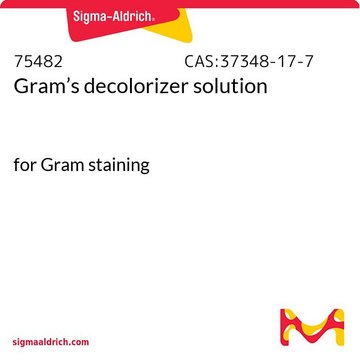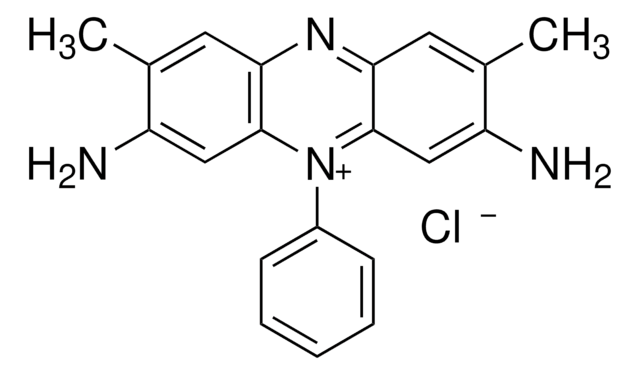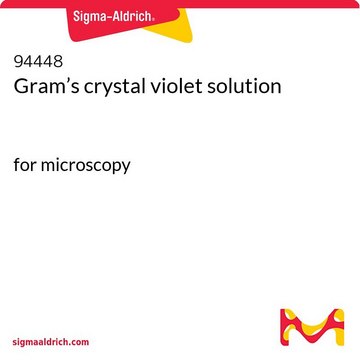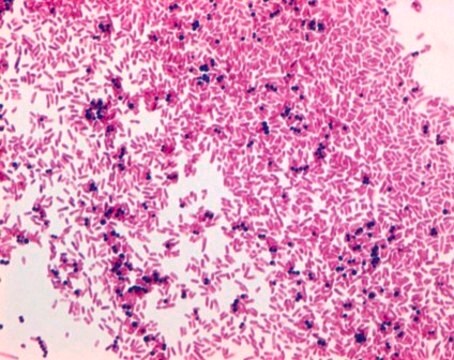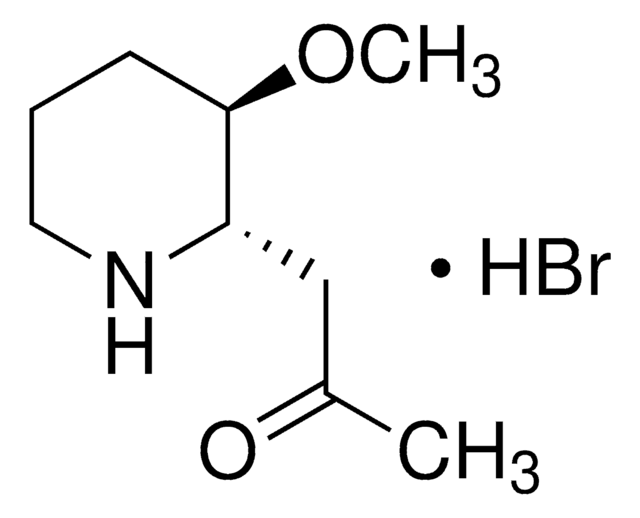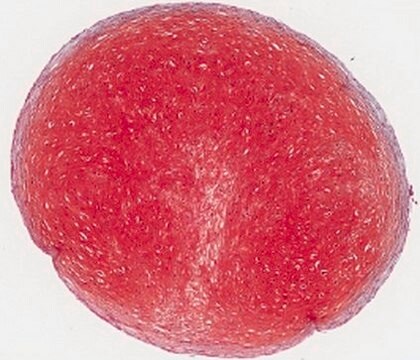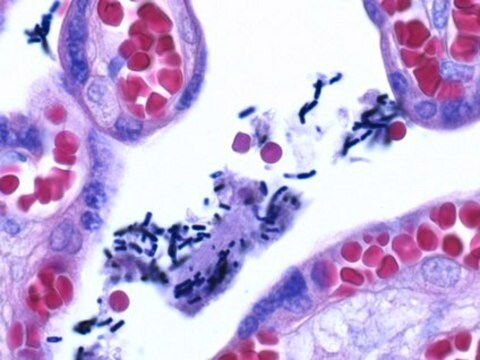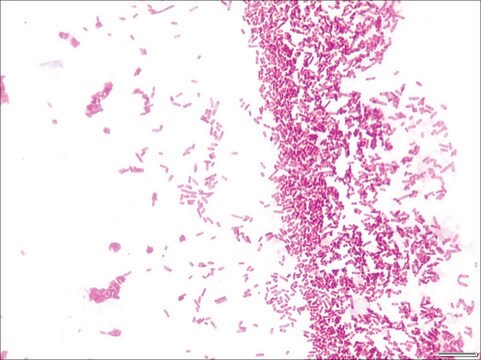Kluczowe dokumenty
94635
Gram′s safranin solution
for microscopy
Synonim(y):
Safranin T solution
About This Item
Polecane produkty
klasa czystości
for microscopy
Poziom jakości
Postać
liquid
okres trwałości
limited shelf life, expiry date on the label
skład
ethanol, 10%
metody
microbe id | staining: suitable
kolor
red to very dark red
współczynnik refrakcji
n20/D 1.339
rozpuszczalność
water: soluble at 20 °C
gęstość
0.986 g/mL at 20 °C
εmax
4.0 at 532 nm in 50% ethanol
spektrum działania antybiotyku
Gram-negative bacteria
Gram-positive bacteria
Zastosowanie
diagnostic assay manufacturing
hematology
histology
temp. przechowywania
room temp
ciąg SMILES
[Cl-].Cc1cc2nc3cc(C)c(N)cc3[n+](-c4ccccc4)c2cc1N
InChI
1S/C20H18N4.ClH/c1-12-8-17-19(10-15(12)21)24(14-6-4-3-5-7-14)20-11-16(22)13(2)9-18(20)23-17;/h3-11H,1-2H3,(H3,21,22);1H
Klucz InChI
OARRHUQTFTUEOS-UHFFFAOYSA-N
Szukasz podobnych produktów? Odwiedź Przewodnik dotyczący porównywania produktów
Opis ogólny
Zastosowanie
- as a non-toxic replacement for crystal violet for the quantification of biofilm formation
- to develop a hyaluronic acid visualization method
- to study improved β-lactam susceptibility against biofilm-embedded staphylococcus aureus by 2-aminothiazole
Cechy i korzyści
- Ready-to-use solution.
- Modified and designed in such a way that staining can be carried out in staining cells, on the staining rack, and in automated staining systems.
Zasada
Hasło ostrzegawcze
Warning
Zwroty wskazujące rodzaj zagrożenia
Zwroty wskazujące środki ostrożności
Klasyfikacja zagrożeń
Flam. Liq. 3
Kod klasy składowania
3 - Flammable liquids
Klasa zagrożenia wodnego (WGK)
WGK 2
Temperatura zapłonu (°F)
114.8 °F
Temperatura zapłonu (°C)
46 °C
Środki ochrony indywidualnej
Eyeshields, Faceshields, Gloves, type ABEK (EN14387) respirator filter
Wybierz jedną z najnowszych wersji:
Masz już ten produkt?
Dokumenty związane z niedawno zakupionymi produktami zostały zamieszczone w Bibliotece dokumentów.
Klienci oglądali również te produkty
Produkty
Clostridia are relatively large, gram-positive, rod-shaped bacteria that can undergo only anaerobic metabolism.
An article regarding the Role of Clostridium perfringens and their detection, identification, and differentiation from Sigma-Aldrich.com
On the Trail of Campylobacter
Dla mikrobiologów najbardziej fundamentalny barwnik został opracowany w 1884 r. przez duńskiego bakteriologa Hansa Christiana Grama.
Nasz zespół naukowców ma doświadczenie we wszystkich obszarach badań, w tym w naukach przyrodniczych, materiałoznawstwie, syntezie chemicznej, chromatografii, analityce i wielu innych dziedzinach.
Skontaktuj się z zespołem ds. pomocy technicznej